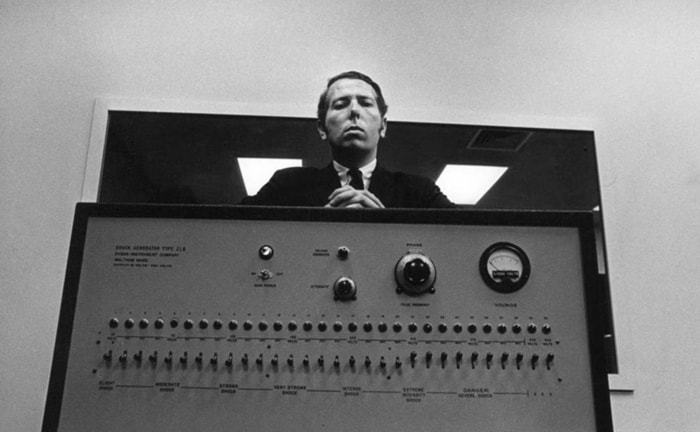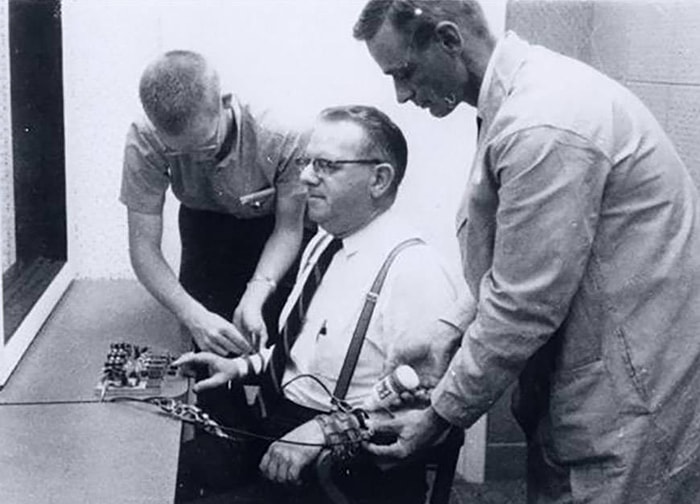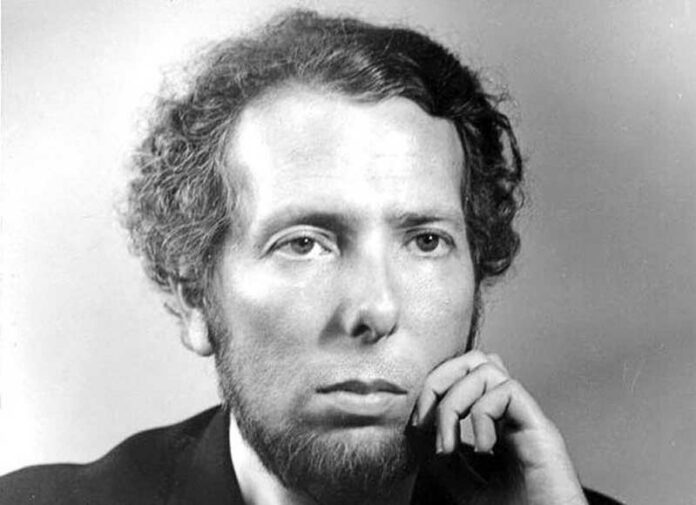The Milgram experiment is a social psychology study conducted by Stanley Milgram in 1963. Milgram, who studied at Yale University, designed this experiment, which gained significant attention and popularity in both scientific and social circles.
Some scholars have called this study one of the most brutal in the history of psychology. Participants were tasked with awakening their sadistic tendencies by consciously inflicting pain and suffering on others.
Today, you will learn the details of the Milgram experiment.
Who is Stanley Milgram?
Stanley Milgram was born in New York City on August 15, 1933. He received his early education at James Monroe High School, where he was classmates with another future renowned psychologist, Philip Zimbardo.
After high school, Milgram enrolled at Queens College in New York to study political science. However, he soon realized that this field did not particularly interest him, though he did manage to complete his studies.
During his education, Stanley became seriously interested in social psychology. He even attempted to enter Harvard but was unsuccessful due to a lack of relevant knowledge.
Nonetheless, this did not deter Milgram. Over one summer, he completed six courses in social psychology at three different higher education institutions. Consequently, in 1954, he was able to enter Harvard.
During his college years, Stanley developed a good relationship with a lecturer named Solomon Asch, who became a popular psychologist known for his studies on conformity. Milgram even assisted Asch in his research and experiments.
Upon finishing his studies, Milgram decided to return to the United States. There, he began working at Princeton with Solomon Asch. It’s important to note that there were no personal friendships between these scholars; their interest in each other was purely scientific. After a year, Milgram decided to continue his work in psychology independently from Asch.
The Essence of the Milgram Experiment
In his famous experiment, Stanley Milgram aimed to discover how much suffering people could inflict on others if it was part of their job duties. Initially, he considered traveling to Germany, believing that the German people might be more obedient due to the recent Nazi regime, which had demonstrated the horrors of such governance to the world.
However, when he conducted the first experiments in Connecticut, he realized there was no need to go anywhere; he could continue his work in his own country, as people were the same everywhere.
In this context, it’s worth mentioning another well-known experiment, “The Third Wave.” Be sure to read about it – it’s very interesting.
Summary of the Milgram Experiment
The results of the Milgram experiment clearly showed that people are unable to resist authoritative leadership when it orders them to torture others, even those who are innocent. It turned out that individuals are willing to unquestioningly obey higher authority, carrying out any orders, even if they contradict their personal life principles.
In addition to the United States, this experiment was also conducted in Germany, Italy, the Netherlands, Spain, Jordan, and Austria. The final results of the experiment demonstrated that regardless of nationality, participants intentionally inflicted pain on others if ordered to do so by an authority figure.
Description of the Milgram Experiment
The experiment, called “Obedience,” took place in the basement of Yale University. More than 1,000 people of different genders and ages participated in this study. Initially, participants were offered a wide range of actions that conflicted with their principles and moral norms.
The primary question or task of the Milgram experiment was: How far can a person go in inflicting pain on another until obedience to an authority figure becomes contradictory to them?
The participants were given a completely different explanation of the experiment: they were told that the goal was to study the effects of physical pain on human memory functions. The study involved a teacher (experimenter), a subject (learner), and a confederate actor (playing the role of another learner).
According to the rules, the learner was required to memorize a long list of different word pairs, and the teacher was to check how well and accurately the learner remembered these word combinations.
If the learner made a mistake, the teacher had to administer an electric shock. With each new mistake, the teacher would administer another electric shock, with the voltage increasing each time.
How the Milgram Experiment was Conducted
Before starting the experiment, Milgram arranged a rigged drawing to determine who would be the learner and who would be the teacher. The subject was always assigned the role of the teacher.
The actor, playing the learner, was seated in a chair with “electrical wires” attached. Before the experiment began, both the teacher and the learner were given a sample shock of 45 volts to ensure the unaware participant could feel the pain that the learner would supposedly experience.
The teacher would then go into an adjacent room and begin dictating words to the learner. When the learner made a mistake, the teacher would immediately press a button to administer an electric shock. The voltage of each subsequent shock increased by 15 volts, with a maximum voltage of 450 volts.
As mentioned earlier, the learner was a confederate actor who only pretended to be shocked. The testing system was set up so that the learner would answer correctly once, then make three mistakes in a row.
Therefore, by the time the teacher had read all the word pairs on the first sheet, the electric shocks had reached 105 volts. When the subject wanted to continue reading the words on the next sheet, the experimenter would make them start over, reducing the electric shock to 15 volts.
This was done so that the participant understood the experiment would not end until all word pairs were correctly recalled by the learner.
Obedience to Authority in the Milgram Experiment
When the learner received a 105-volt shock, they demanded the abuse stop, causing the teacher to experience stress and guilt. However, after the experimenter reassured the subject (the confederate actor), convincing them that everything was under control and that they should continue, the teacher would comply.
Thus, as the Milgram experiment progressed, the electric shocks grew stronger, causing the learner to scream in agony, while the teacher increasingly doubted their actions.
The Climax of the Milgram Experiment
During the experiment, the experimenter assured the subject that they would take full responsibility for the learner’s life and the outcome of the experiment. The subject was instructed to continue, despite not being threatened or promised any reward.
With each subsequent shock, the actor screamed more horribly and begged the teacher to stop. When the subject began to doubt the morality of their actions, the experimenter would again reassure them that everything was going according to plan and that they should not stop.
Remarkably, in the end, each Milgram experiment was carried through to completion. The final results of this study stunned everyone.
Stunning Results
In one of the experiments, it was recorded that out of 40 participants, 26 showed no compassion towards the learner and continued the torture up to the “lethal” 450-volt electric shock.
Only after administering the 450-volt shock three times, the experimenter declared the experiment over. The majority of the teachers administered electric shocks to their learners that, in real life, would lead to a lethal outcome.
The Milgram Experiment in 1963
In 1963, Stanley Milgram, a professor at Yale University, shocked the world with the results of his research.
When the public learned about the results of the Milgram experiment, they were simply dismayed by them. Interestingly, the subjects themselves were also shocked by their own actions.
Complete Information About the Experiment
For more detailed information about this experiment, you can read Stanley Milgram’s book titled “Obedience to Authority: An Experimental View.” This information will be of interest to both psychologists and laypeople.
The Milgram experiment not only highlighted the power of authority in influencing human behavior but also underscored the ethical challenges in conducting psychological research. It continues to serve as a poignant reminder of the complexities of human nature and the enduring impact of social dynamics on individual actions.
